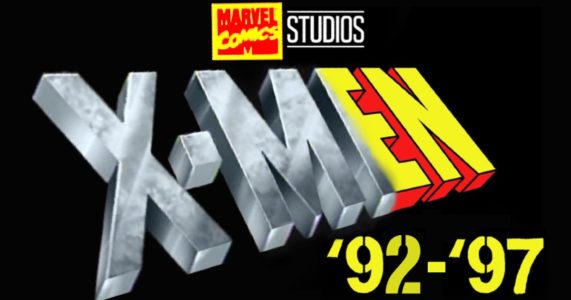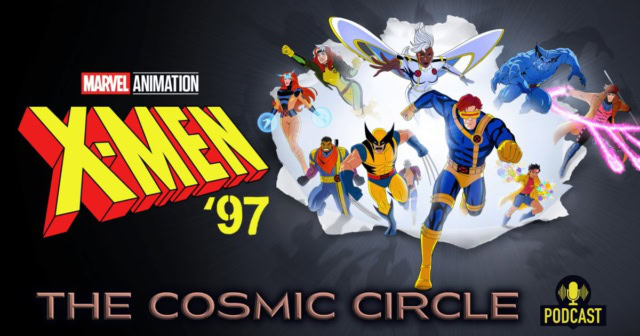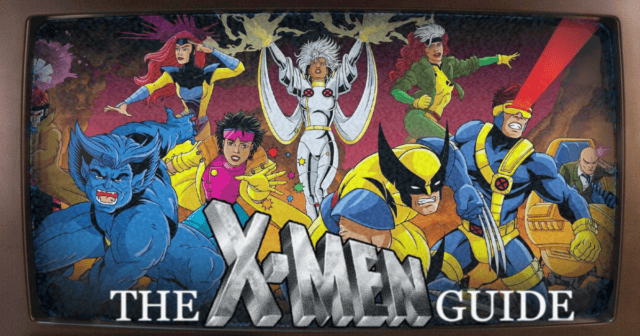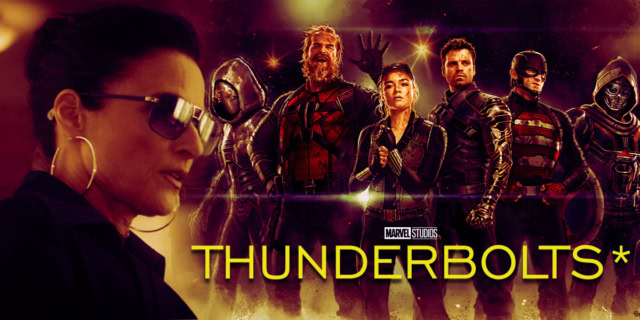‘X-Men ’97’ Season 1 Review: Redemption and Retrospect
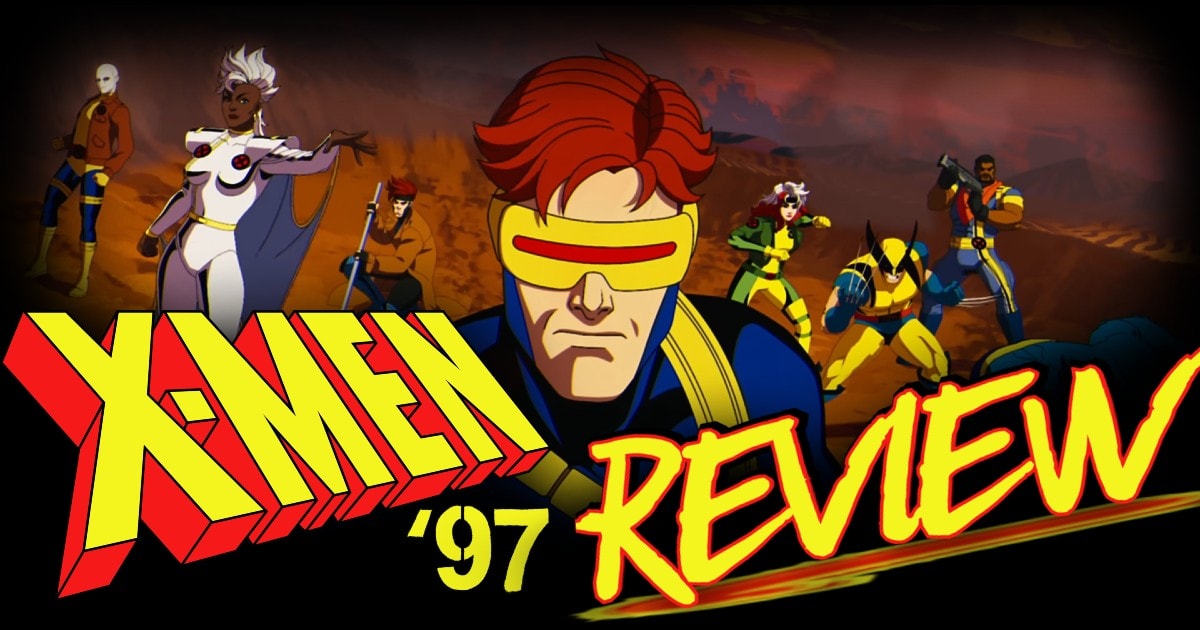
By now you’ve probably heard: X-Men ’97 is phenomenal. This little cartoon show is one of the biggest, loudest, most colorful, most ambitious, most heartbreaking projects Marvel has ever done. Originally advertised as a nostalgic revival of the original X-Men: The Animated Series, X-Men ’97 is the complete opposite, becoming one of the most aggressively progressive comic book adaptations ever made. With better animation, storylines, drama, character arcs, and politics, X-Men ’97 improves on its predecessor in truly every regard. Watching weekly, each installment felt like a standalone event, and when put together, these 10 episodes form a monumental whole that no X-Men adaptation can compare with.
X-Men ’97 is full of sci-fi madness, anime extravaganza, moral complexity, and deeply flawed characters. It’s action-packed, tragic, heroic, comedic, and romantic. X-Men ’97 overflows with emotion, encompassing the entirety of the human experience from birth to death, from murder to mercy, from hope to heartbreak. In the guise of a children’s cartoon, X-Men ’97 presents a mature look at the mess of humanity, our ruination and our redemption, and dares to ask: Is tolerance extinction? How can we continue to exist if we allow our enemies to survive?
Impeccably animated with vintage ’90s VHS flair and set to an electric score, X-Men ’97 is an evolution of the original stories told in the comics. The series explores its themes through dynamic character arcs that feel true to comics’ constantly shifting status quo. It deconstructs the entire world of the X-Men, then reassembles the pieces while examining the question of redemption.
Beloved characters like Cyclops, Rogue, and Magneto are pushed to their breaking points, radicalized in bold character turns reminiscent of the high drama in long-running comic serials. The show consolidates multi-year arcs into digestible pieces, sometimes even improving on the original source material while remaining faithful to the spirit, story, and characters. The comic’s material is adapted tastefully, with cumbersome crossovers skillfully streamlined into fast and fun episodic events.
There is so much to say about what makes this show great, but in this review I want to focus on two specific elements: How X-Men ’97 stands alongside Avengers: Infinity War as one of the MCU’s strongest events, and the redemption of X-Men: The Animated Series’ weakest season.
[Warning: Spoilers for the whole first season ofX-Men ’97 below.]
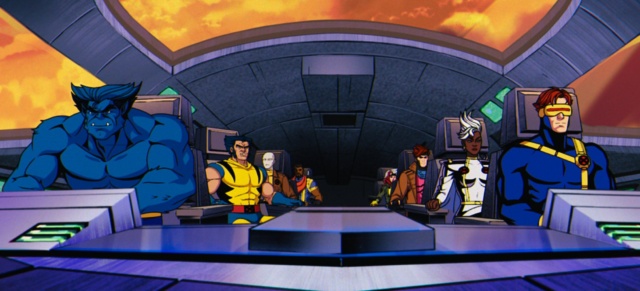
X-Men ’97 and the legacy of Avengers: Infinity War
Throughout the weekly run of X-Men ’97, I’ve made a number of comparisons to other comicbook adaptations. One of the most fun recurring bits are the Man of Steel inspirations (Episode 6 with Storm flying over the desert, episode 8 with Bastion’s childhood, etc.).
However, I think the most appropriate comparison is to Avengers: Infinity War. Episode 5 “Remember It” is an obvious example, with the sudden decimation of Genosha matching the shocking devastation of the Snap in Infinity War. Stories need cataclysmic events to remind us why we need heroes. These mass deaths solidify the true evil of the villains, the level of the stakes, and the importance for the heroes to overcome their differences for a greater good. They show what happens when heroes fail.
The stakes established in episode 5 carry through the remainder of the episodes, with the suddenly real possibility of death looming over all the characters. Episodes like “Remember It” are the reason why the finale arc has so much emotional tension because it truly feels like the X-Men may be doomed.
Another key moment was the beginning of episode 8, “Tolerance is Extinction – Part 1”. I was astonished how well the filmmakers balanced the many side stories and naturally folded them into the main event as the new sentinels were awakened around the world. Watching the episode felt like reading a perfect comics crossover, with the main event and tie-ins for the little side stories.
Seeing the main blockbuster action affect the various side characters in the universe grounds the big-scale story with small-scale humanity. The potential of this is thrilling in concept; however, the issue is that many comics events and tie-ins are actually abysmal disappointments. Infinity War (the movie) was a rare example of an adaptation doing comicbook storytelling even better than most comic books. And now X-Men ’97 has done the same.
This is continued to a lesser degree in episode 10 with the cameos from various Marvel universe characters. Expanding the universe is a classic comic book trick to demonstrate the wide-ranging effects of a world-ending threat. Hopefully these characters will return in a bigger role in season 2 to build on their brief introductions in season 1.
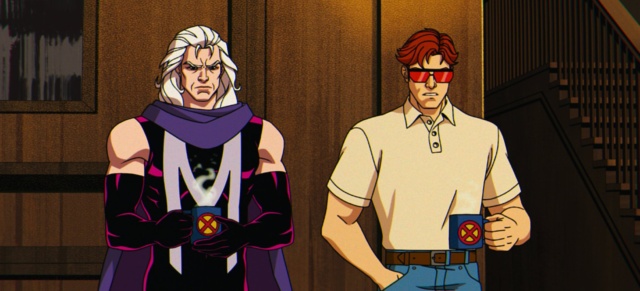
How this new Disney+ show redeems the original animated series
X-Men: The Animated Series season 4 was designed to end the show with the giant crossover “Beyond Good and Evil”. When the show was renewed unexpectedly, season 5 was rushed with reduced resources, becoming the season weakest of the series. For such a powerful and impactful TV show, the beloved X-Men: The Animated Series ends meekly.
X-Men ’97 fixes that legacy not only by continuing the show honorably, but continuing specific storylines established in season 5. Of all the cameo characters to receive screen time, Captain America gets the biggest role in X-Men ’97 Episode 7, which redeems his lackluster episode in X-Men: The Animated Series S5 E7 “Old Soldiers.”
Additionally, S5 E9 “Descent” is the origin story for Mister Sinister, a major villain in X-Men ’97’s first season, and his origin is referenced again in X-Men ’97’s season finale. And of course, X-Men ’97 resolves the abrupt ending to the original show, a bizarre and bittersweet episode which left Xavier in a coma unceremoniously.
Season 5 of X-Men: The Animated Series has long been infamous among fans. But rather than remaining a skippable disappointment, season 5 has now been redeemed by X-Men ’97 to be an essential part of the storyline. This is similar to how the MCU has treated The Incredible Hulk and Thor: The Dark World, “redeeming” their weakest installments by retroactively building on those stories. X-Men ’97 is made possible because of season 5, and season 5 is made stronger because of X-Men ’97.
The power of retrospect
There’s one more point X-Men ’97 has to its advantage, which is the power of retrospect. As I wrote about in the X-Men: The Animated Series guide, the original series shaped their episodes around brand new comics with brand new characters. Many of the characters in the original show were still extremely underdeveloped in 1992 (e.g. Gambit had JUST been created in 1990). The show daringly crafted its characterizations and storylines around primordial concepts that hadn’t been fully stabilized in the comics yet.
One of the most telling examples is Cable. In 1992, Cable was a standard muscle man, with zero connection to the Summers family. The original show doesn’t connect him to Scott because even there was no connection to Scott in the comics. Cable’s comics lore radically evolved from 1992 to 1995, establishing the canon we know today. But the changes were controversial, even among the comics creative teams.
At that same moment, the show was being developed so quickly that the showrunners never had time to reflect on the changes to Cable’s story once they had stabilized. Making the comics and the cartoon concurrently made the process too chaotic to care about Cable’s crazy canon. In contrast, X-Men ’97 now has 30 years of hindsight to thoughtfully incorporate the comics of the 1990s into a cohesive and satisfying 10-part drama. The difference is abundantly clear in the confidence, precision, and pace of the story.
Even more excitingly, X-Men ’97 has the ability to push beyond the 90s as well. Episodes 5 and 7 (“Remember It” and “Bright Eyes”) draw from Grant Morrison’s New X-Men, a groundbreaking run that defined the X-Men’s transition from the 1990s to the 2000s. By adapting the genocide of Genosha (the “E is for Extinction” comics arc), Marvel Animation is pushing X-Men ’97 beyond the 1990s and into the 2000s.
We see this again in episode 8 (“Tolerance is Extinction – Part 1”) when Jubilee receives a costume upgrade which match her 2000s look in the comics. The show is allowing the characters to evolve as the comics did in real time.
X-MEN ’97: Character Designs Then and Now
What X-Men ’97 can improve
To be quite honest, the show is almost perfect. The only major issue is the pacing. The show jumps through major events at a rapid pace. The first 3-episode arc has the action and drama of a full season, and the pace barely lets up from there, nearly losing coherence in the insane 3-part finale.
While this is very exciting, it’s a problem when this causes story to be sacrificed. This might be most noticeable in the mid-season with “Motendo”, “Lifedeath”, and Xavier in space. Each of these stories had the potential to be a great episode of their own, but the series squeezed these three separate stories into only two episodes, and the result is unfortunately unsatisfying. Never mind a full arc, these stories don’t even get a full episode each.
In a show this thoughtful about empowerment, Storm’s journey is relegated to two half episodes with a significant relationship that feels wholly unearned. Xavier’s absence is the crux of the season, but we don’t spend enough time with him to emotionally understand why he chose to stay away for so long. Roberto and Jubilee are the young romantics of the show, but their relationship feels hollow because we never have the time to fall in love with them ourselves.
The series doesn’t spend enough time with these vital side characters for us to develop bonds with them meaningfully. There was enough potential for three separate episodes or a continuous 3-episode arc, but two episodes are simply not enough, especially when bisected by the attention-grabbing “Remember It”.
X-Men ’97 Season 1 Podcast with Anthony, Uday & Alex (Cosmic Circle Ep. 56)
What to expect in X-Men ’97 season 2
It’s no surprise that X-Men ’97 will continue to use 90s storylines while pushing forward into the 2000s, and the season 1 finale left us with a few clues. In the future, Cyclops, Jean, and young Nathan are set to adapt the Adventures of Cyclops and Phoenix and Askani’son comic arcs from 1994-1996. The rest of the team are sent back in time to potentially trigger a new Age of Apocalypse (also 1994), while the present day Apocalypse is teased to resurrect Gambit as “Death”, one of his Four Horsemen. Gambit as “Death” is a staple of the Blood of Apocalypse comic arc from 2006.
Dangling plot threads from the first season could also indicate Onslaught (an incredibly powerful villain created by Xavier and Magneto’s mind-meld) as well as Wolverine’s bone claw era from the Larry Hama comics run.
There are so many other directions the story could go in based on the 2000s arcs, too. In particular, the next season could feature elements from Decimation, Necrosha, or even the Messiah Trilogy with Cable. I think we’ll also get more focus on different X-Teams like X-Force and New Mutants, depending on what storylines they choose to adapt.
At minimum, we can probably expect Emma Frost to feature more prominently in the show, alongside other elements from Grant Morrison’s New X-Men like Quintin Quire. And with the next season expected around 2026, there’s always the possibility of somehow tying into Avengers: Secret Wars as we get closer to that fateful multiversal crossover event.
X-Men ’97 season 1 is now available to watch on Disney+. Have you seen the full season yet? What did you think? Let us know on social media @mycosmiccircus or in The Cosmic Circus Discord where we have been discussing the series.
There are so many reasons to love X-Men ’97, but these are just some of my takeaways I wanted to share. I can’t wait to see what comes next! Check out my episode-by-episode guide to X-Men: The Animated Series and X-Men ’97 linked below. Including the comic inspirations for each story arc!
X-Men: The Animated Series Guide
Exclusive: Val’s Organization OXE to Have a Role in Thunderbolts*

